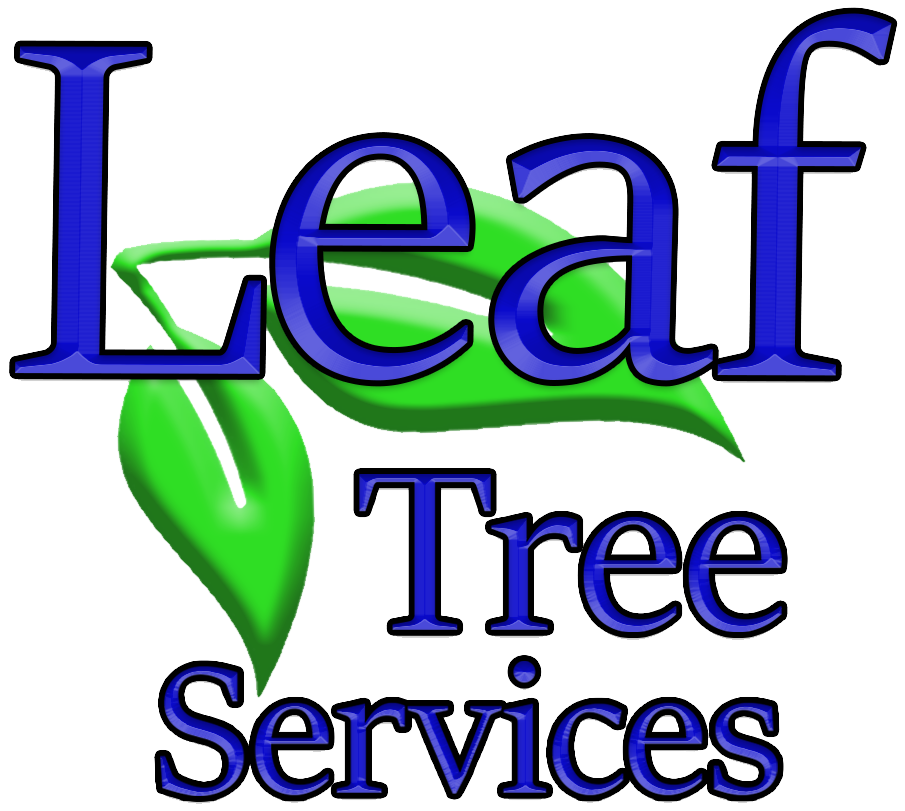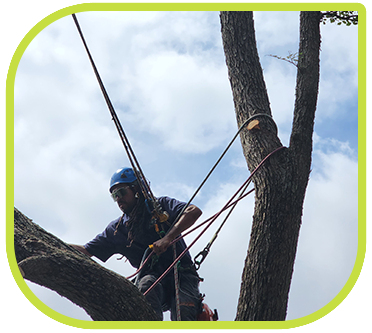Arborist can help determine tree age and assess risk of them falling
An arborist in Round Rock and Austin TX can help assess fall risk for trees and remove them to avert losses. Trees are among the oldest living organisms on our planet, silently standing witness to the passage of time and the evolution of landscapes. But have you ever wondered, “How old are my trees?” and “Can my arborist tell me if they will fall?” These questions delve into the fascinating realm of arboriculture, where science meets nature to unravel the mysteries of tree age and stability. In this article, we’ll explore the methods used to determine tree age, the factors influencing tree stability, and how arborists assess the risk of tree falls.
Determining Tree Age
The age of a tree is a testament to its resilience and endurance through years, decades, and even centuries. Arborists employ various techniques to estimate the age of trees accurately:
- Counting Growth Rings: One of the most common methods involves counting the growth rings visible in a tree’s trunk. Each ring represents one year of growth, with the width of the rings indicating the rate of growth during that year. By coring or taking a small section of the tree trunk, arborists can count these rings to determine the tree’s age.
- Radiocarbon Dating: For trees with inaccessible or non-distinct growth rings, radiocarbon dating provides an alternative method. By analyzing the carbon isotopes present in the tree’s wood, scientists can estimate its age with remarkable precision.
- Dendrochronology: This scientific method involves analyzing patterns in tree rings across multiple samples to establish a chronological record of tree growth. Dendrochronology not only reveals the age of individual trees but also provides insights into past environmental conditions and climate fluctuations.
- Increment Borers: Arborists use increment borers to extract cylindrical cores from tree trunks without causing significant harm. These cores provide a cross-section of the tree’s rings, allowing for accurate age determination without the need for extensive sampling.
Factors Affecting Tree Stability
While age is an important factor in assessing tree stability, several other variables come into play:
- Species Characteristics: Different tree species exhibit varying degrees of resistance to wind, pests, diseases, and other environmental stressors. Arborists consider the inherent characteristics of each species when evaluating stability.
- Health and Vitality: A healthy tree with robust foliage, deep root systems, and proper nutrient uptake is more likely to withstand external pressures than a weakened or diseased tree. Regular inspection and maintenance by arborists are essential for preserving tree health.
- Environmental Factors: Weather events such as storms, heavy rainfall, and droughts can impact tree stability by affecting soil moisture levels, root stability, and wind resistance. Arborists assess these environmental factors to anticipate potential risks.
- Structural Integrity: Structural defects such as hollow trunks, decayed wood, weak branch attachments, and root damage can compromise the stability of a tree. Arborists use specialized tools and techniques to identify structural weaknesses and mitigate risks.
Assessing the Risk of Tree Falls
While it’s impossible to predict with absolute certainty whether a tree will fall, arborists employ systematic approaches to assess the likelihood of tree failure:
- Visual Inspection: Arborists conduct thorough visual inspections of trees, looking for signs of structural damage, decay, pest infestations, and other indicators of instability. This includes assessing the tree’s overall condition, canopy density, and root system.
- Diagnostic Tools: Advanced diagnostic tools such as resistograph drills, sonic tomography, and ground-penetrating radar allow arborists to non-invasively evaluate the internal structure and health of trees. These tools provide valuable insights into potential risks hidden beneath the surface.
- Risk Assessment: Arborists use risk assessment techniques to prioritize trees based on their potential impact on human safety and property. Trees posing high risks may require immediate action, such as pruning, cabling, bracing, or removal, to mitigate potential hazards.
- Community Engagement: In addition to assessing individual trees, arborists engage with communities to raise awareness about the importance of tree care and safety. Educational initiatives, workshops, and outreach programs empower residents to recognize signs of tree instability and take proactive measures to address potential risks.
- Tree Maintenance Practices: Regular tree maintenance, including pruning, fertilization, and soil management, plays a vital role in enhancing tree stability and longevity. Arborists guide appropriate maintenance practices tailored to the specific needs of each tree species and environment.
- Emergency Response Planning: Despite proactive measures, emergencies such as severe storms or sudden structural failures can occur. Arborists collaborate with emergency responders and local authorities to develop contingency plans for rapid response and recovery in the event of tree-related incidents.
- Technology Integration: The integration of technology, such as geographic information systems (GIS) and aerial drones, enhances the efficiency and accuracy of tree assessment and management. These tools enable arborists to gather comprehensive data, analyze spatial patterns, and prioritize interventions across large-scale landscapes.
- Climate Resilience Strategies: With climate change exerting increasing pressures on ecosystems, arborists play a crucial role in implementing climate resilience strategies for urban forests. This includes selecting resilient tree species, improving soil health, and integrating green infrastructure solutions to mitigate the impacts of extreme weather events.
As stewards of our urban forests, arborists play a multifaceted role in safeguarding tree health, enhancing community safety, and promoting environmental sustainability. Through a combination of scientific expertise, practical experience, and community engagement, arborists contribute to the resilience and vitality of our urban ecosystems. By recognizing the value of trees and investing in responsible tree care practices, we can nurture thriving urban forests that enrich our lives and sustain future generations.
Work with the best arborist in Round Rock and Austin TX
Leaf Tree Services is your locally owned professional tree service with certified arborists for residential and commercial customers in Round Rock, Austin, and surrounding Central Texas areas. You can trust your trees to us. Contact us today to schedule a consultation, at 512-670-6766.


